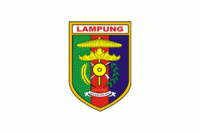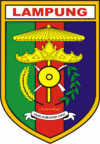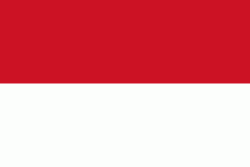Lampung (Provinsi Lampung)
 |
 |
The province covers a land area of 35,376 sq.km and had a population of 7,608,405 at the 2010 census, 9,007,848 at the 2020 census, and 9,081,792 according to the official estimates for mid 2021, with three-quarters of that being descendants of Javanese, Madurese, and Balinese migrants. These migrants came from more densely populated islands, in search of available land, as well as being part of the national government's Indonesian transmigration program, of which Lampung was one of the earliest and most significant transmigration destinations.
On 10 May 2005, a 6.4 magnitude earthquake struck the province. In 1883, the volcano of Krakatoa, located on an island in the Sunda Strait, suffered one of the most violent volcanic eruptions in recorded history, with disastrous consequences for the area and elsewhere, including estimates of human fatalities in the tens of thousands, and worldwide temperature and other weather effects for years.
In the 7th century, word spread throughout China of a region located in the far south (Namphang) known as "Tolang Pohwang", it is referred to Tulang Bawang Regency or regions alongside the Tulang Bawang River. It is possible that Lampung was part of the Srivijaya empire, with its regional capital in Jambi, which controlled most of Southeast Asia until the 11th century era. The Srivijayans came to Lampung in search of gold and amber, two of the province's natural resources.
This history is substantiated by both unearthed relics and the discovery of the Palas Pasemah inscriptions and the Batu Bedil inscriptions in the Tenggamus region that trace back to Srivijayan times and civilization. Other, smaller kingdoms like Tulang Bawang (name still extant as a regency in the province) and Skala Brak also existed during the 7th to 8th centuries CE. The former was centered around the Tulang Bawang River, hence the name.
The entry of the Banten Sultanate in Lampung in the 16th century marked the beginning of the spread of Islam in the region. Lampung is known for pepper which at that time was in high demand. At that time, the Dutch began pressing for control of the region. In the 1930s Lampung still accounted for 30% of the world's pepper production.
The control of pepper production exercised by the Banten Sultanate made Lampung one of the most prosperous harbors in the archipelago. Similarly, pepper plants also attracted migrants from Europe as employees of trading companies. It was in 1610 that the Dutch East India Company established a trading post in Banten and later in the 17th century began the forceful pepper cultivation in Lampung to increase its already existing production. The area was part of the Banten Sultanate until it was annexed by the Dutch in 1752, when it became known as the Residentie Lampoengse Districten. It became part of the Dutch East Indies.
Under Dutch rule, transmigration programs were implemented. This program involved the migration of people from Java to Lampung. It was quite well-received and many residents of Java moved to the transmigration sites located in the eastern region of Lampung. The program was expanded after Indonesian independence in the 1960s. The Javanese brought cultural devices to Lampung, such as the gamelan and wayang. Balinese also came to Lampung to follow the transmigration program. The presence of migrants from other regions in Lampung has made this region culturally diverse. Ethnic diversity has become a tourist attraction in itself, with the added potential of nature and cultural tourism. Numerous art studios in the area act as a preserver of indigenous art and culture.
Map - Lampung (Provinsi Lampung)
Map
Country - Indonesia
 |
 |
| Flag of Indonesia | |
As the world's third largest democracy, Indonesia is a presidential republic with an elected legislature. It has 38 provinces, of which nine have special status. The country's capital, Jakarta, is the world's second-most populous urban area. Indonesia shares land borders with Papua New Guinea, East Timor, and the eastern part of Malaysia, as well as maritime borders with Singapore, Vietnam, Thailand, the Philippines, Australia, Palau, and India. Despite its large population and densely populated regions, Indonesia has vast areas of wilderness that support one of the world's highest level of biodiversity.
Currency / Language
| ISO | Currency | Symbol | Significant figures |
|---|---|---|---|
| IDR | Indonesian rupiah | Rp | 2 |
| ISO | Language |
|---|---|
| NL | Dutch language |
| EN | English language |
| ID | Indonesian language |
| JV | Javanese language |
















